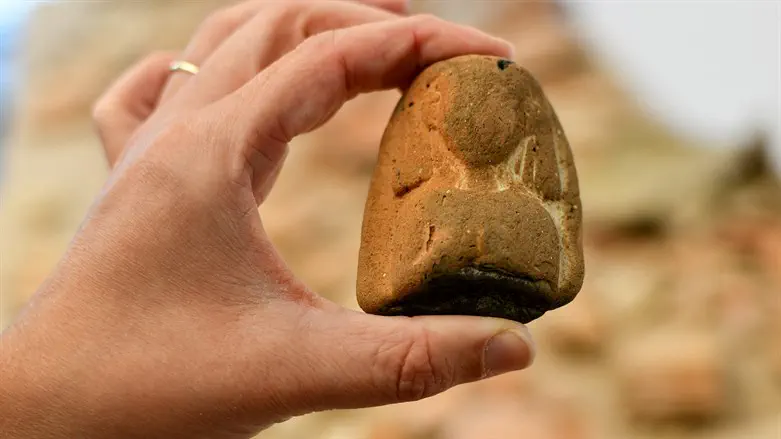
A more than 3,000-year-old statuette, identified with the Egyptian goddess Hathor, was discovered by a citizen in the Palmachim Coast National Park, and was handed over to the government authorities.
Lydia Marner, a 74-year-old woman from Lod, immigrated to Israel from Azerbaijan with her husband and two daughters. Since her retirement from her job as a mediator at the Ministry of Social Affairs, she and her husband have gone on weekly trips to Palmachim Beach
"The beach is one of our favorite places in Israel," she says. "Almost every week we go on family trips, sometimes we even go into the sea, and it is a place of very high family value for us.''
About a month ago, during one of the weekly trips, while walking along the beach, she noticed that something was sticking out of the sea. "It was a rather stormy day; the waves were high, and the weather was wintry. During the walk by the water, I noticed a stone coming towards me. I immediately called my husband and told him that I had seen something in the water."
Lydia took a picture of the find, and tried to check with her acquaintances to find someone who would be able to identify it. They immediately told her that it looks like something that needs to be checked by professionals. She turned to the Antiquities Authority's Facebook page, and Dror Citron and Idan Horn, inspectors from the Authority, came to examine the statuette. The examination revealed it to be a statue of the Egyptian goddess Hathor.
Lydia loved to research and learn about the history and archeology in her surroundings, and the find moved her very much. "I can't believe I found this. At first my husband laughed at me, but today the whole family already knows the amazing story that happened to me. I'm very happy that the privilege to find it fell to me."
Dr.Amir Golani, an expert on the Bronze Age at the Antiquities Authority, said that "these figurines, which were used for worship and are usually identified with the Egyptian goddess Hathor, are typical of the Canaanite culture in the Land of Israel - mainly in the Late Bronze Age and also in the Iron Age. The Canaanites used to adopt ritual and religious customs of the Egyptians, who ruled our region at that time. It is like homes today, where you install a mezuzah or hang a picture of a saint on the wall, back then - they used to place ritual figurines in a central place in the house, for good luck and protection from bad things. Although the statuette is very worn, its size is well known to us. It is made of clay that was embedded into a stone pattern, which allows for the multiple production of this type of figurines. It can be recognized that this is Hathor by her hairstyle, which simulates the horns of a bull, and by the prominent eyes and ears that were designed for her. Hathor was a powerful goddess, who symbolized many virtues for the Egyptians - fertility, strength, protection, and wisdom."
